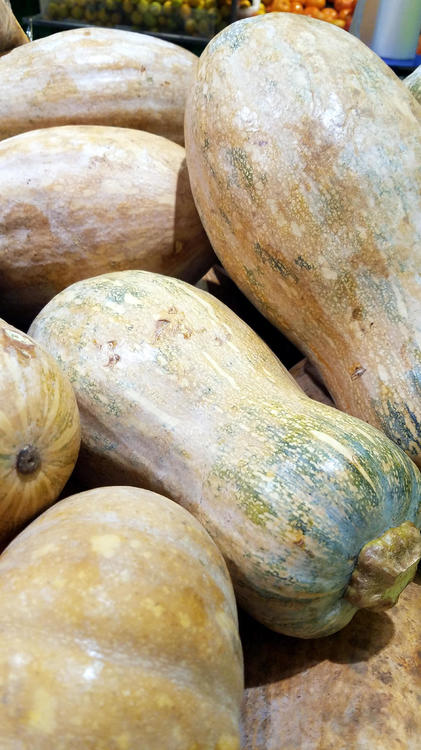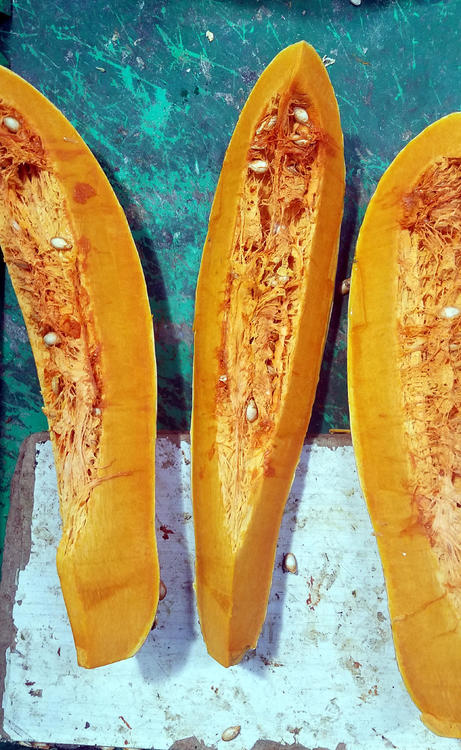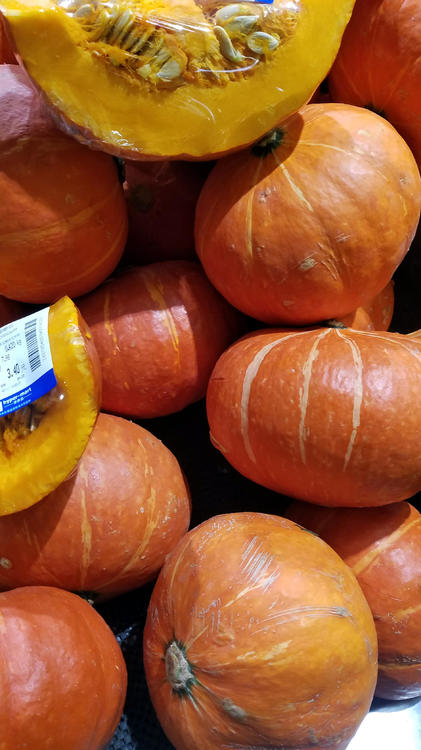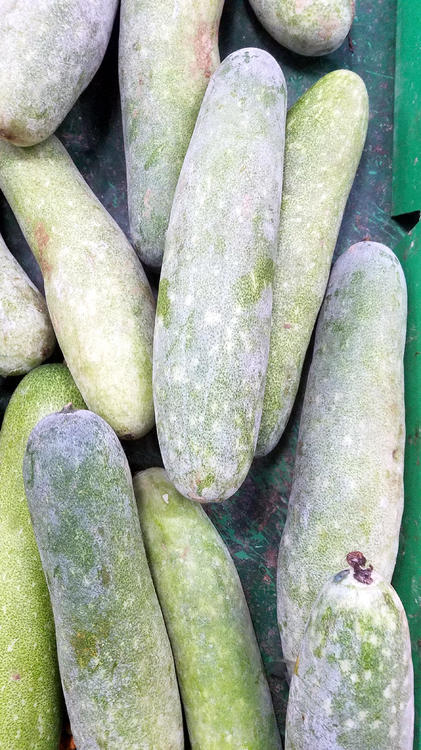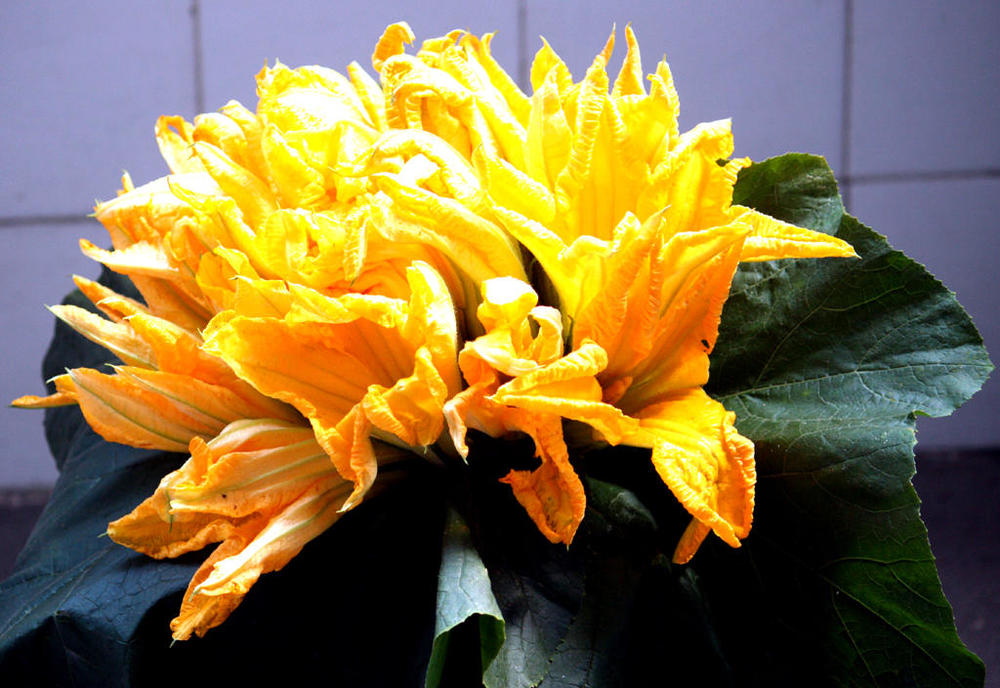Now I enter dangerous waters.
I'm going down the pumpkin hole. There is a problem in that there is no standard definition of a pumpkin, other than it is a type of gourd. This means what I consider to be a pumpkin, you may not and the next guy will think of something different again. This applies in both English and Chinese.
So, I'm going to show examples of what is known as 南瓜 (Mand: nán guā; Cant: naam4 gwaa1), which is literally 'south gourd' and usually translated as 'pumpkin'. However, again there are many types.
The most common example is simply named 南瓜. These:
They are around 18 inches/ 46 cm long; clearly too much for the average family in one sitting, so they are also sold in pieces.
We also see these, which may more closely resemble what many of you think of as pumpkins. They are 圆南瓜/圓南瓜 (Mand: yuán nán guā; Cant: jyun 4*2 naam4 gwaa1) which means 'round pumpkin. Again, as can be seen, you can buy a whole one or just a piece.
They also come in a green-skinned variety known as 青圆南瓜仔/青圓南瓜仔 (Mand: qīng yuán nán guā zǐ; Cant: cing1 jyun 4*2 naam4 gwaa1zai2), 'young green round pumpkin'.
Then we have these small pumpkins known either as 小南瓜 (Mand: xiǎo nán guā; Cant: siu2 naam4 gwaa1), 'small pumpkin' or, in Mandarin only, 贝贝南瓜/ (bèi bèi nán guā), 'baby pumpkin'. Those in the photo below are around 6 to 7 inches/ 15 to 18cm long.
At the opposite end to the babies are the 老南瓜 (Mand: lǎo nán guā; Cant: lou5 naam4 gwaa1), meaning "old pumpkins'.
One very noticeable variety is this:
These knobbly gourds are known as 丑南瓜/醜南瓜 (Mand: chǒu nán guā; Cant: cau2 naam4 gwaa1) which means 'ugly pumpkin. Don't look so ugly to me.
All of these pumpkins are mainly used in soups and hot pots, although pumpkin cakes are also very popular.
More popular than anything is the seeds. Chinese people love pumpkin (and sunflower seeds). I once took an 18-hour train journey and the family opposite me literally ate them for the whole journey.
The seeds are also used to produce oil which is used as a condiment; not suitable for frying. This is available only a few specialist stores.
The people here in Guangxi, especially in the countryside, eat the the pumpkin leaves as a green vegetable. But I have kept my favourite to last.
南瓜花 (Mand: nán guā huā; Cant: naam4 gwaa1 faa1). Pumpkin flowers are wonderful. Used mainly in light soups, but I've also had them stuffed with minced pork etc. They are also delicious battered and deep fried, tempura style.The flowering season is short, but a highlight of my year,
There are other pumpkins, but the season is only beginning. I'll add any more I see, as and when they appear.


